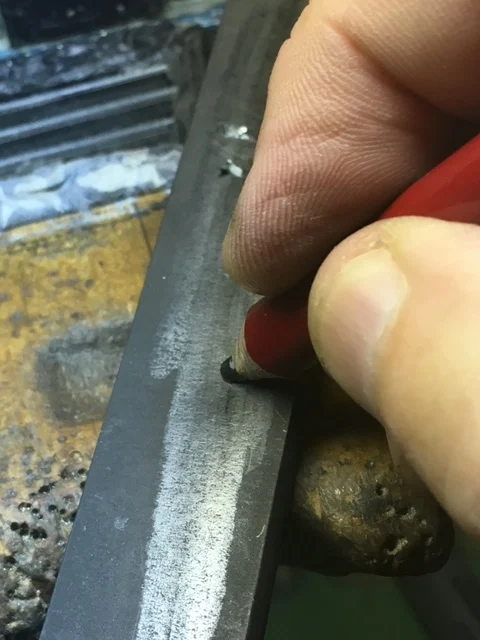I've been active in my blog discussing this important technique, which is very important in our jewellery profession.
Many graver polishing machines are on the market, but I avoid these 'bench-top' mechanisms. They are not meant for those who are on a minimal budget. The costs for the Polishing papers and wooden sticks will be equivalent to a 'noon-day lunch' of $30.00.
=============================================
What tools are required?
1) GRAVERS (of any size and age)
2) Paint stirrer sticks (made of wood)
3) Polishing papers (as shown)
This graver polishing can be used on any style & all gravers of any size.
This is my collection of Polishing Paper boards/sticks every one of the papers are shown in sequential order.
This is the rough texture of an Emery board at #240 grit.
The next paper is in order of grit is #400. This is the correct order of polishing papers.
These next few papers being shown are #800 grit, but still more are needed to give the Onglette blade a shiny metal cutting surface.
Lastly, is my favourite #1,200 grit paper, but there is still more to come. I'm polishing my FLAT graver in this photo. I have a little surprise for you!
I will only use a 'half of the board' while polishing the graver.
On any of these papers, I will have my soft-core pencil and thoroughly rub the paper with this pencil.
The rubbing of the pencil leaves a fine amount of soft lead inside the pores of the papers.
As a review of the #600 grit paper, you can easily see the 'pores of the paper' without the soft pencil not being filled with lead.
Finally, here is a very good photo of the pencil rubbing. The papers will now have an increase of at least 50% increase of grit.
On any polishing paper, this 50% will apply to all papers. Instead of buying more polishing papers, all you need is to use your soft-pencil rubbings.
This is an enlarged photo of the soft pencil lead that I use all the time.
.jpg)







.JPG)

.JPG)
.JPG)
.JPG)





.jpg)
.jpg)
.jpg)

.jpg)
.jpg)
.jpg)
.jpg)
.jpg)
.jpg)

.jpg)



.jpg)













.jpg)
.jpg)
.jpg)
.jpg)
